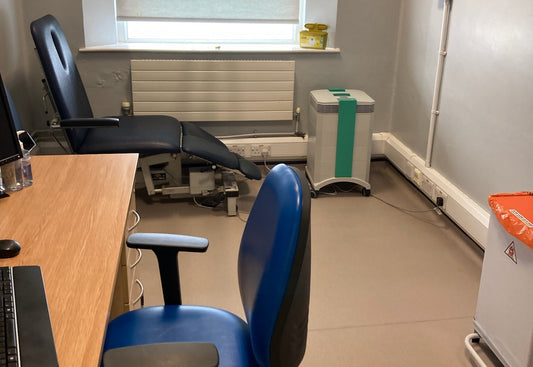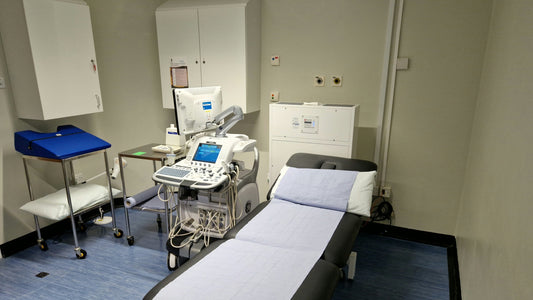Although composting is seen as a green alternative to conventional waste management and is certainly a 'natural' process, it may not be without its associated health hazards. Bioaerosols in composting facilities contain bacteria, fungi and other biological elements which could pose a risk of allergy and lung disease. Research into bioaerosols and their effects still have some way to go, and, in the meantime, it is important to adopt regulations that protect both the public and those who work at composting facilities from particulate pollution and chemical and gases, while not stifling the growing organic recycling industry.
What are bioaerosols?
An aerosol is a suspension of solid or liquid particles in a gas. Bioaerosol is short for biological aerosol and refers to the fact that the particles contain biological material, including:
- Bacteria
- Fungi, including fungal spores
- Pollen grains
- Viruses
- Endotoxins (toxins produced by bacteria)
- Plant cell wall components
- Organic dust.
A bioaerosol is usually a very complex mixture, whose particle range varies between 10 nanometres (0.01 microns) for viruses and 100 microns for pollen grains. Particles in a bioaerosol are subject to buffeting by air currents, which can carry them through relatively large distances, and to the force of gravity which pulls them downwards. The larger the particle is, the quicker it settles under gravity. Thus, pollen grains tend to remain airborne for just a few hours, while a virus will remain airborne almost indefinitely. Of course, one of the places bioaerosol particles can settle is in the human respiratory tract. Particles six microns or more in size will become trapped in the upper respiratory tract (nose and throat) but if they are 20 microns or more, they will be too big to penetrate to the lower respiratory tract (lungs).
Many of the microorganisms found in a bioaerosol are not actually viable (ie, alive). They cannot survive easily in the air because of the lack of the water they need (under conditions of higher humidity, however, more microorganisms may survive). Fungal spores, which have a tough outer coat, are more likely than most bacteria to survive in bioaerosol conditions and are found to be viable under conditions of low humidity and at extremes of temperature.
Where are bioaerosols found?
Bioaerosols are found around soil, particularly in woodland, around water and near sewage. Although bioaerosols tend to be an outdoor phenomenon, it is not uncommon to find them indoors under damp conditions. Bioaerosols are particularly associated with composting (the use of microorganisms to break down organic waste).
Why are bioaerosols an issue in the organic recycling/composting industry?
Organic recycling, or composting, has gone far beyond the creation of the modest garden compost heap from kitchen and garden waste. The UK compost industry has enjoyed strong growth in recent years, driven by the need to find alternatives to landfill to deal with domestic waste. Composting is seen as an environmentally friendly approach to waste management. In composting at its simplest, a pile of organic matter is simply left to rot, with bacteria and fungi present in the material transforming it into compost, a material rich in plant nutrients which has value as a fertiliser.
Modern industrial composting is a highly controlled process, with inputs of oxygen, and carbon and nitrogen nutrient sources for the microbes being carefully monitored. The material is turned often to allow for a more efficient composting process, which can create bioaerosol emissions. According to the Environment Agency, which has responsibility for giving composting companies permission to operate and for making sure they are safe, operations that may result in the uncontrolled release of high levels of bioaerosols include:
- Shredding of waste
- Turning of waste in sanitisation
- Turning of waste in stabilisation
- Turning of waste during the maturation stage.
What are the health hazards of bioaerosols?
The fungus Aspergillus fumigatus is commonly present in bioaerosols in composting facilities and can cause a serious lung condition known as allergic bronchopulmonary aspergillosis (ABPA) if the fungal spores are inhaled. This is a particular problem for people with asthma and can lead to permanent lung damage. Exposure to bioaerosols in composting facilities can also lead to nausea, fatigue and headache. Pollen grains and other components of bioaerosols can cause allergic reactions in susceptible people.
However, there is much that we do not know about the health effects of bioaerosols, both on those working at composting facilities and those living in the surrounding area. According to the Environment Agency, there is some limited evidence suggesting that those who live close to a composting facility may be at increased risk of adverse health effects. It is generally accepted that bioaerosols generated from commercial composting decline rapidly within the first 100 metres from a site and have reached background levels within 250 metres.
In light of current knowledge, the Environment Agency quotes the following as being acceptable levels for bioaerosols:
- 300 colony-forming units (cfu) per cubic metre for gram-negative bacteria
- 1000 cfu per cubic metre for total bacteria
- 500 cfu per cubic metre for A.fumigatus.
A cfu is a recognised microbiological method for estimating the number of viable organisms in a sample.
How are bioaerosols regulated?
In November 2010, the Environment Agency put out a new position statement on composting and the potential health effects of bioaerosols, which gives guidance to those applying for permits and discusses the legal limits of air pollution. This is part of an ongoing Government waste policy review. The Department of Environment, Food and Rural Affairs and the Welsh Assembly Government have agreed that these guidelines should apply, at least for now, in England and Wales to all composting operations located within 250 metres of a dwelling or workplace. These guidelines are summarised below:
-
New permits:
This is important for those wanting to enter the organic recycling business or expand an existing operation. The Environment Agency points out that they require applicants for a permit to run a new composting operation within 250 metres of dwellings or workplaces to fill in a Site Specific Bioaerosol Risk Assessment (SSBRA). This is not a new requirement and it must show that bioaerosols can, and will, be maintained no higher than acceptable levels (as described above). If the risk assessment is acceptable, permits will be issued if the maximum quantity of waste handled at any one time does not exceed 500 tonnes or, if it does, operations will be carried out with precautions in place to be sure there are no uncontrolled high levels of bioaerosol released. In other words, no giant composting sites within the 250-metre limits unless the technology employed to protect from bioaerosol emissions is spot-on and convincing. The Agency is not going to impose generic requirements for monitoring at new sites. Rather, they will consider the need for monitoring on a case-by-case basis. Obviously, monitoring adds to the costs of operating a composting business, so this may reassure owners. -
Existing operations, formerly exempt:
The Environmental Permitting (England and Wales) Regulations (2010) laid out a 'revised composting exemption' which reduced the amount of waste that can be composted on a site, at any one time, from 300-400 tonnes down to 60-80 tonnes. What this means is that some existing operations formerly exempt will need to apply for a permit if they want to carry on at a higher scale after 1st October 2013. The requirements of the permit depending on how far the operation is from dwellings and workplaces. If more than 250 metres, so-called standard rules apply, if 250 metres or less then the Environment Agency will not need a new SSBRA if one already exists for that operation, and is still relevant. Also, no general bioaerosol monitoring will be required, pending the DEFRA review of waste policies. Thus, smaller operations may face an added burden of paperwork to prove their safety in the bioaerosol context. -
Existing permitted sites:
The Agency is to carry out a selective review of existing permitted sites that are less than 250 metres of dwellings or workplaces to ensure that bioaerosol monitoring is being carried out where required and to advise when protective measures need to be introduced.
When it comes to the SSBRA, these guidelines state that, in the current state of scientific understanding of bioaerosols, there is no suitable methodology for carrying out an adequate quantitative risk assessment for new composting facilities. This means that the Agency, taking a precautionary approach, will not permit these new facilities where such an assessment would be required. This means that large facilities (more than 500 tonnes) carrying out operations in the open will not be allowed (unless, presumably, they can operate far from human habitation).
How can people work in composting facilities be protected from bioaerosols?
While the Environment Agency regulations protect people living or working near a composting site, the protection of those working there is the responsibility of the Health and Safety Executive (HSE). In recent years, HSE has carried out some monitoring at composting facilities and concluded that workers close to compost handling activities have been exposed to high levels of airborne bacteria and fungi, exceeding 100,000 cfu and even, on occasion, one million cfu per cubic metre of air sampled. There are a number of ways in which such exposures may be minimised, including:
- Adequate monitoring of both air and employee health
- Enclosure of operations
- Negative aeration (drawing air down through the compost, rather than blowing it upwards)
- Personal protective equipment
- Use of office air cleaning solutions in nearby office facilities.
What next?
If you are concerned about bioaerosols in your composting facility and the risk to your employees, then contact a member of our expert team who will be able to recommend the best solution for improving air quality and protecting your employees. Email us or call us on 020 3176 0524.




